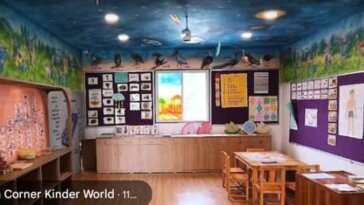What Is Emotional Development & Why Is It Important?
It is virtually impossible to fathom an experience void of emotion. Give it a try. Recall what you ate for dinner last night. What emotions come to mind? What thoughts, images, or plans were triggered? Are you hungrier?
We are in a constant state of expressing, recognizing, and interpreting emotions in ourselves, our children, our coworkers, and complete strangers. Even though emotions influence every thought, action, decision, attitude, and feeling we have, you may be surprised to learn that emotion was not studied as a developmental process until the 1970s (Pollak et al., 2019).
It is only in the past 20 years that considerable research attention has been given to explaining changes in emotions that occur from infancy through adulthood (Pollak et al., 2019).
A definition of emotional development
The definition of emotional development by Izard and Trentacosta (2020, para. 1) will ground this article. It gives us a common language for thinking about the complexity of emotional development and for analyzing how different theories of emotional development address this complexity.
Emotional development [is the] emergence of the experience, expression, understanding, and regulation of emotions from birth and the growth and change in these capacities throughout childhood, adolescence, and adulthood. The development of emotions occurs in conjunction with neural, cognitive, and behavioral development and emerges within a particular social and cultural context.
Based on this definition, there are three implications for theories of emotional development:
- Emotional development is a lifelong process, so a theory of emotional development needs to account for change from birth through the end of life (spoiler: we are not there yet).
- Emotions develop in conjunction with neural, cognitive, and behavioral changes, so with every hypothesis of emotional change we have to ask what is happening in the brain. How are thinking, memory, and learning involved in this change?
- Emotional development occurs within a socio-cultural context. A theory of emotional development needs to account for differences in social experiences and differences in cultural histories, beliefs, and lived experiences in which emotions develop.
2 Reasons understanding emotional development is important
Our experiences make us who we are, literally. Emotional experiences, particularly early in life when neuroplasticity is at its peak, have a profound effect on the developing brain and lifelong health.
1. Emotional experiences become embedded in the architecture of the brain
Rapid neural organization occurs during the first few years of life and establishes the basic foundation upon which future learning, health, and behaviors develop (National Scientific Council on the Developing Child, 2004).
The structure of this foundation is built through neurodevelopmental processes that are highly influenced by the child’s unique experiences, whether positive or negative (Perry 2002).
Neuroimaging studies provide evidence for the impact of early child maltreatment on the structure and function of the brain (Cassiers et al., 2018). A meta-analysis of adults who experienced childhood adversity found structural differences in stress-related areas of the brain compared to adults who did not experience adversity (Calem et al., 2017).
In a separate meta-analysis, studies using fMRI show that children with a history of abuse show disruption in neural pathways in the fronto-limbic networks associated with emotional and reward processing (Hart & Rubia, 2012).
Behavioral research on infant attachment histories also supports the relationship between early experience and emotional development. In a longitudinal study, Kochanska (2001) found that infants with a secure attachment to a caregiver at 14 months showed reduced fear and anger at 33 months in response to situations designed to elicit fear and anger. In contrast, negative emotions increased with age in insecurely attached infants.
2. Early emotional health is foundational for lifelong health outcomes
Babies, toddlers, and preschoolers may not be the population that immediately comes to mind when we think of mental wellness and mental health difficulties. However, because early experiences provide the foundation for neural development, we see that mental wellness begins far earlier than adolescence.
Zero to Three (2017, p. 1) defines infant and early childhood mental health as:
“the developing capacity of the child from birth to 5 years old to form close and secure adult and peer relationships; to experience, manage, and express a full range of emotions; and explore the environment and learn – all in the context of family, community, and culture.”
Adverse childhood experiences (ACEs) occur in early childhood environments and involve parents and caregivers in the child’s household. Maternal violence, substance abuse, mental illness, and child abuse by a parent are examples. Ample research shows that exposure to ACEs in childhood increases the long-term risk for a wide range of chronic physical diseases and mental health issues in adulthood (Chang et al., 2019; Felitti et al., 1998; Gilbert et al., 2015).
To reduce the risk of exposure to ACEs, research and policy must prioritize:
- The support of responsive relationships in early childhood
- The reduction of sources of stress experienced by children and their caregivers
- Support for core life skills in early childhood, such as daily routines and setting and achieving goals (National Scientific Council on the Developing Child, 2020)











